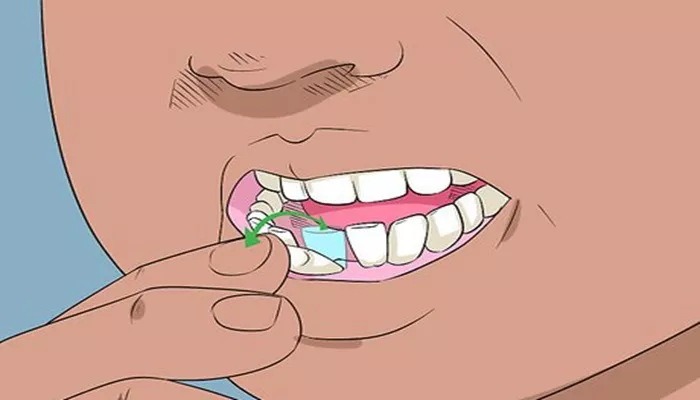Pulling a loose wisdom tooth at home can be a tempting option for those seeking to avoid dental costs or preferring a more private experience. However, it is crucial to approach this process with caution and thorough understanding to avoid complications. Wisdom teeth, also known as third molars, often cause discomfort due to overcrowding or improper alignment. If a wisdom tooth becomes loose, it may be ready for extraction. In this article, we will guide you through the steps to safely remove a loose wisdom tooth at home, emphasizing the importance of hygiene, safety, and post-extraction care.
Understanding When a Wisdom Tooth is Ready for Extraction
Before attempting to pull a wisdom tooth, it’s essential to determine if it’s truly ready for extraction. A tooth that is significantly loose and moves easily with gentle pressure is likely ready. However, if the tooth is not loose or shows signs of severe pain, swelling, or resistance, it’s advisable to consult a dentist. Wisdom teeth that are impacted or partially erupted should not be attempted at home due to the risk of complications.
Preparing for the Extraction
Gathering Necessary Supplies
To ensure a safe and clean extraction process, gather the following supplies:
Sterile Tweezers or Dental Forceps: These are used to grip the tooth firmly.
Dental Floss: Useful for teeth that need a bit more force to dislodge.
Gauze or Cotton Balls: For controlling bleeding after extraction.
Antiseptic Mouthwash: To clean the area and prevent infection.
Topical Numbing Gel: To reduce discomfort during the process.
Ice Pack: To numb the area externally if needed.
Ensuring Hygiene
Wash Your Hands: Thoroughly clean your hands with soap and water.
Sterilize Tools: Boil tweezers or dental forceps in water or wipe them with alcohol to ensure they are sterile.
Steps to Pull a Loose Wisdom Tooth at Home
Step 1: Numb the Area
To minimize discomfort, apply a topical numbing gel to the gum area around the tooth. Alternatively, an ice pack can be applied externally to numb the area. Rinse your mouth with warm salt water to cleanse and slightly numb the area.
Step 2: Loosen the Tooth
Gently wiggle the tooth back and forth with clean fingers or a tissue.
This helps loosen it further from the socket. Repeat this process daily if the tooth is not yet ready to come out.
Step 3: Use Dental Floss or Tweezers
Dental Floss Method: Tie a knot in a piece of dental floss and carefully slide it under the loose tooth. Hold onto both ends of the floss and pull it upwards in a swift motion to dislodge the tooth.
Tweezers Method: Use sterile tweezers to grasp the tooth firmly. Gently twist and pull the tooth in a back-and-forth motion. Be cautious not to apply too much force, which can cause the tooth to break.
Step 4: Manage Bleeding
After extracting the tooth, place a piece of gauze or a cotton ball over the extraction site and apply gentle pressure to control bleeding. Change the gauze as needed until the bleeding stops.
Step 5: Clean the Area
Rinse your mouth with antiseptic mouthwash to prevent infection. Avoid vigorous rinsing or spitting for at least 24 hours to allow a blood clot to form over the extraction site.
Post-Extraction Care
Managing Pain and Swelling
Over-the-Counter Pain Relievers: Use medications like ibuprofen or acetaminophen to manage pain and inflammation.
Cold Compress: Apply an ice pack to reduce swelling and numb the area.
Dietary Adjustments
Stick to soft foods for a few days after extraction to avoid discomfort and prevent complications. Avoid chewing on the extraction site until it heals.
Monitoring for Complications
Watch for signs of infection such as increased pain, swelling, redness, or pus formation. If any complications arise, seek professional dental care immediately.
Risks and Considerations
While pulling a loose wisdom tooth at home might seem straightforward, there are risks involved, including pain, bleeding, and potential infection. If the tooth is not significantly loose or if you experience severe pain or resistance, it is advisable to consult a dentist. Dentists can provide a sterile environment and local anesthesia to ensure a painless extraction process.
Conclusion
Pulling a loose wisdom tooth at home requires careful preparation and attention to hygiene and safety. While it can be done safely with the right techniques and precautions, it is always recommended to consult a dental professional if there are any doubts or complications. Wisdom teeth extractions should ideally be performed by a dentist to avoid potential risks and ensure proper healing. However, for those who choose to proceed at home, following these steps can help minimize discomfort and complications.

